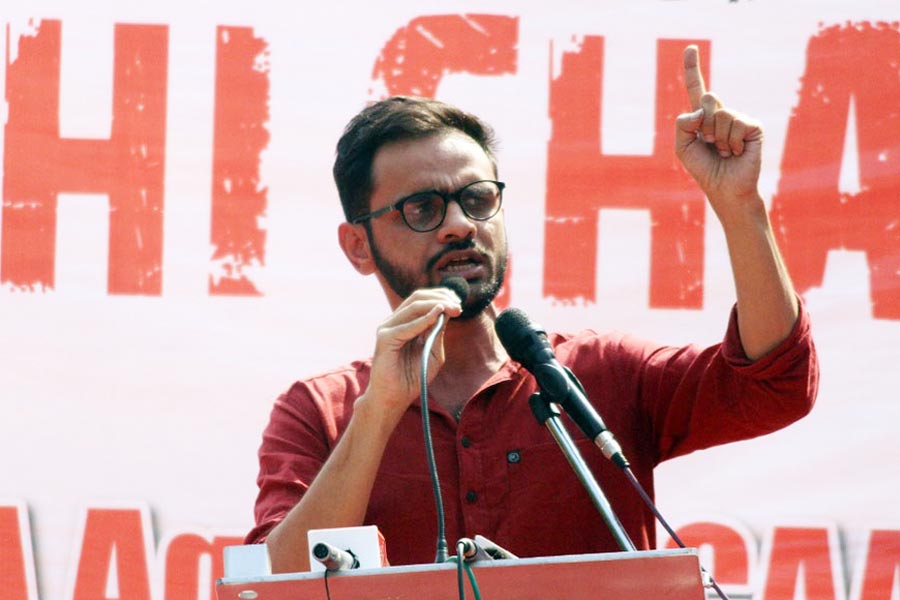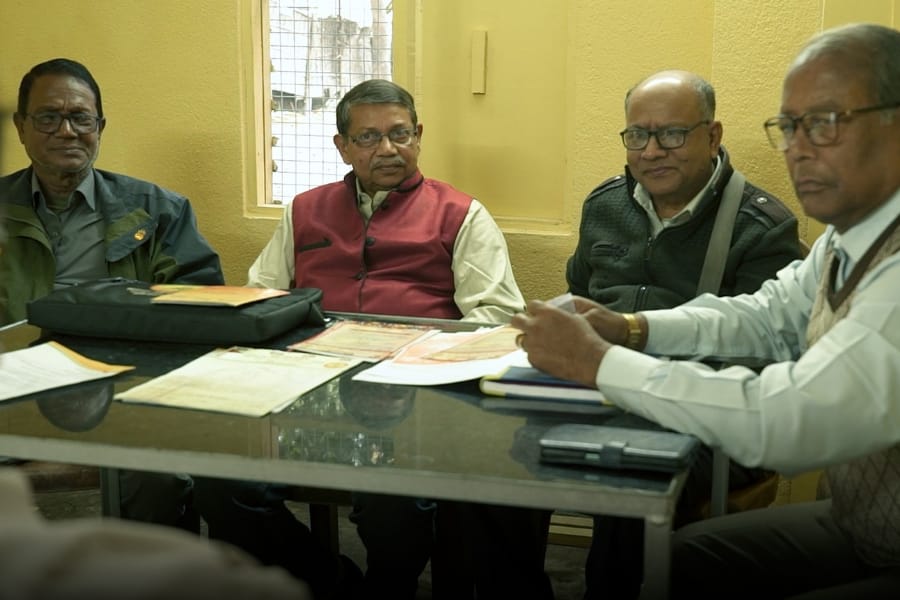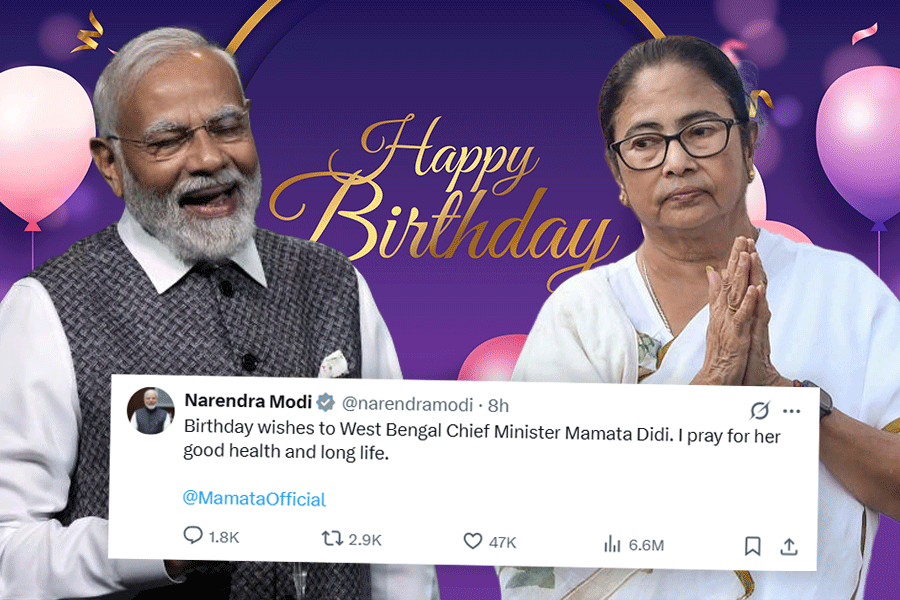 |
| The march through the Jhitka forest with the minesweeper clearing the way. Picture by Amit Datta |
Lalgarh, June 20: At 7.30am, the order to enter Lalgarh rang out.
“Let the march begin. We will triumph,” barked Praveen Kumar, the Midnapore range DIG, at the “base camp” in Bhimpur.
The camp was brimming with some 2,000 policemen, both central and state, many of whom had been requisitioned overnight from Midnapore. Tense at the prospect of crossing the 6km stretch of the Jhitka forest, which lay on the way to Lalgarh and which the police believed was infested with armed Maoists, the policemen were quiet.
Specific reminders were drilled into them before the march began. “Shoot if you see anyone moving in the jungle and watch out for any signs of a mine having been planted. If there is a loud sound, lie flat on the ground.”
Sometime before the force set out, around 4am, 40 members of the CRPF’s Cobra unit, divided into two groups, had spread out into the Jhitka jungles to sanitise it. Their brief was to spread out 500 metres laterally into the forest on either side of the road and clear it ahead of the march.
“We wanted to ensure maximum safety for the troops walking along the metalled road,” an officer said. “This is why all possible precautions have been taken.”
At the head of the file of policemen was a minesweeper. Through the open turret, policemen with machineguns scanned the forest. Behind the mine machine was a payloader to dig up earth and fill up the trenches on the road. En route to Lalgarh, the police encountered three such trenches that had to be filled up.
The policemen were mar- ching at a gap of five feet from each other — “that will make it more difficult for the Maoists to target them than if they were in a cluster”, an officer said.
As the first marchers reached the Jhitka forest 2km away, the tail was still touching the Bhimpur camp. “It was a huge mobilisation,” said Kumar, who was leading the policemen along with Midnapore SP Manoj Verma. “I don’t remember such a formation in the districts in recent times.”
Every now and then, a helicopter would hover overhead, surveying the area.
A kilometre into the forest, on spotting a village, Kumar decided to veer off the road and go there. He asked a sec- tion of the force to surround it and a search was carried out to see if arms had been stored there. Finding nothing, he joined the long line of policemen.
A while later, a section of the force was asked to get off the road and go into the forest to sanitise it again, though the Cobra unit had been there before. “A double check always helps,” an officer said.
At one point, a commandant of the CRPF ordered everyone to lie flat. Instantly, everyone hit the ground. He had heard a sound and didn’t want to take any chances.
Two minutes later, an “all clear” was given and everyone was up on their feet.With the hours progressing, the sun beating down and humidity high, around 11am, a CRPF jawan, N. Roy, collapsed from exhaustion. He was rushed to Midnapore hospital in an ambulance in the convoy but could not be saved.
A little while later, the Jhitka forest was finally crossed.
By 12.15, Kumar and Verma stood before the Lalgarh police station. Seeing them, a policeman inside rushed out and opened the gate.
Kumar then stepped inside, smiled and hugged him. Lalgarh had finally been reached, even though the real battle — taking control of the area — was about to begin.
There was a smile from across the road, too. Suchandana Sinha Roy, 12, peeping over the wall of her house, appeared happy to see the policemen milling around.










